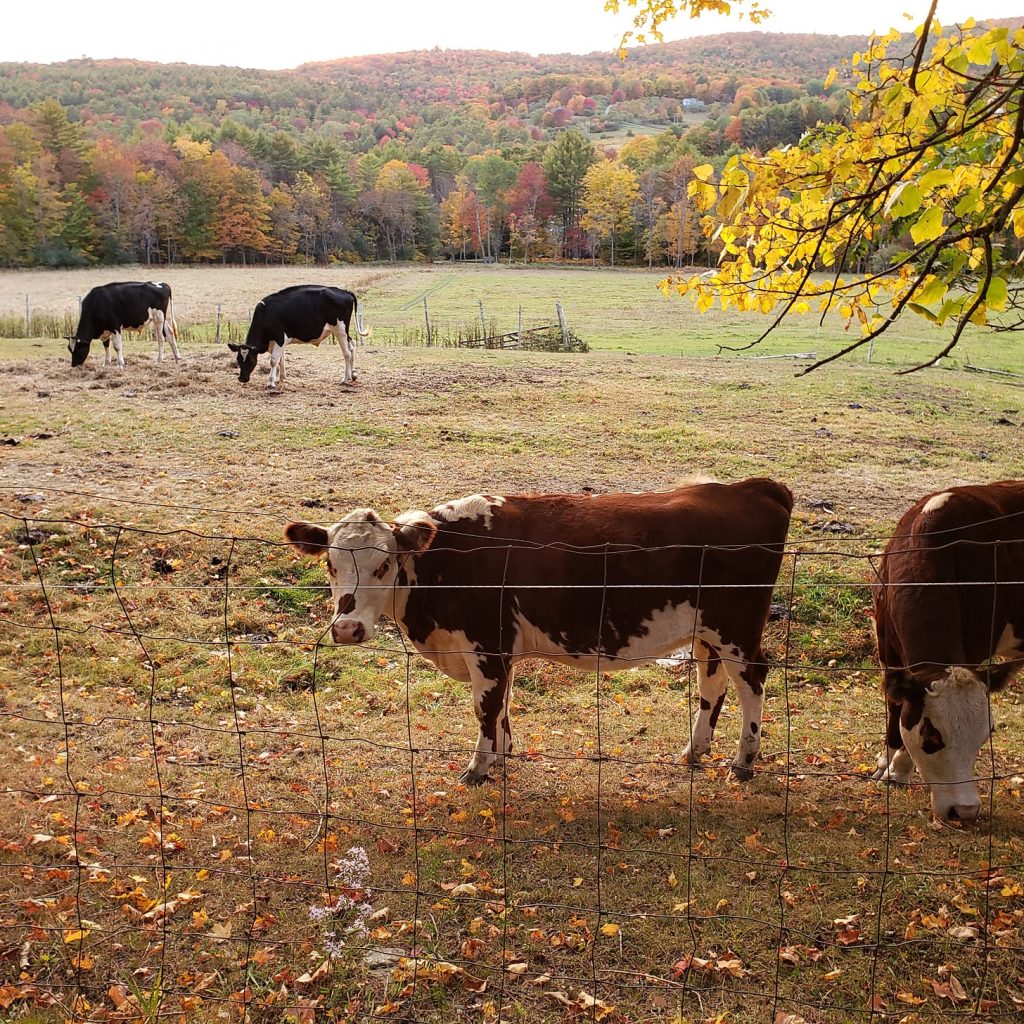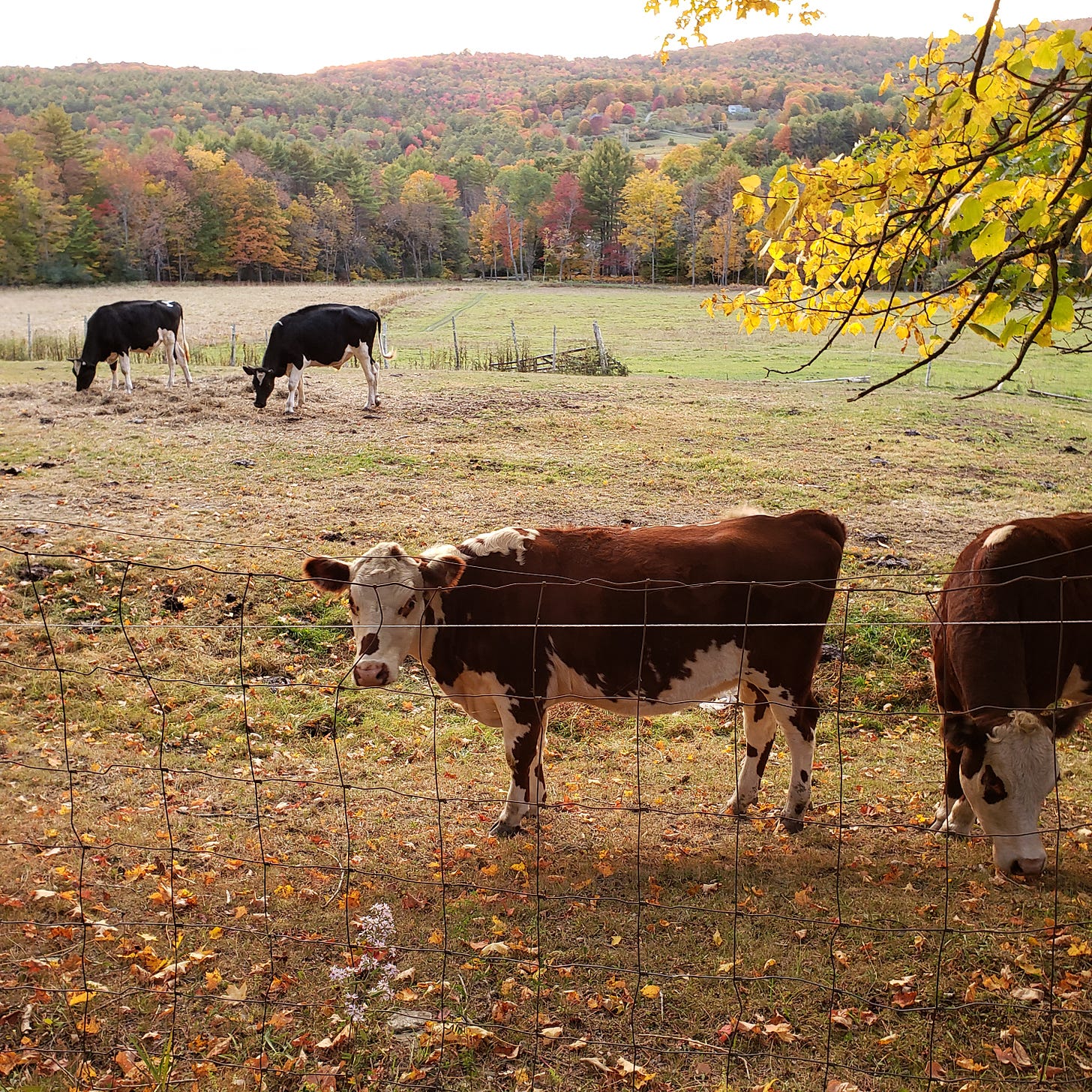Trapped in Suburbia?
The migration of rural Americans into cities for better pay and amenities over the last century or so has accompanied standards of comfort and plenty unimagined in the past. City workers overflowed into suburbs, where more and more land was irrevocably withdrawn from local agricultural uses in favor of cheaper foods shipped from larger, more efficient, or more productive areas. Indeed, much of Americans’ domestic produce is now grown in California and Arizona and then trucked or flown to points east and south — a very different demographic picture from 1924.
The trade-off for cheap food was consolidation and mechanization, which dramatically shifted the nation’s food production and distribution from the local and diverse to the massive and homogeneous. Much like Walmart and Applebee’s displaced Mom-and-Pop general stores and family restaurants, the consolidation of farming and food processing (including especially meats, an industry now tightly consolidated under the control of a handful of gargantuan corporate conglomerates) lowered prices but also choice. This rapid transition was made possible by technology fed a reliable diet of cheap fossil fuels to replace the historic labor of mule, horse, and human.
The resultant benefits of this conversion in agricultural infrastructure are obvious, though so too are numerous health problems. But what is not readily apparent to most consumers is how vulnerable this seemingly miraculous system is to disruption or destruction. Consider the weak links and the potential modern threats.
Food System Vulnerabilities
Many of the technological advances that have improved agricultural efficiency or yields carry accompanying novel risks. Today, most food is transported long distances, including internationally, in container ships that clog a paltry handful of backed up ports, frantic to transfer goods onto a fleet of tractor-trailer trucks.
Tractor trailers, often refrigerated, are the chief means by which Americans get their goodies in plenty, whether from Amazon or Dollar General. American roadways are congested with constant truck traffic, packed into overflowing truck stops and paused in breakdown lanes. It is a fantastic feat of free-market capitalism.
But infrastructure has been poorly stewarded, especially of the nation’s bridges. Finding skilled drivers is a growing problem. The nation’s fleet of trucks is dependent on Taiwan for microchips and foreign sources (particularly China) for diesel exhaust fluid (DEF), without which the trucks don’t budge.
Food System Threats
The shift to industrial agriculture has inflicted profound assaults on the nation’s precious underground water aquifers and its healthy soils. Soils are eroding at alarming rates in many regions, while water draw-downs are not naturally replenished by winter snows or spring rains. The San Joaquin Valley produces 25% of Americans’ food on 1% of the nation’s land, yet some sections of this fertile breadbasket had subsided some 28 feet by 1970 and now subside approximately a foot every year due to water withdrawals! These long-term threats are far easier to demonstrate than climate change and are unaddressed by Chinese-manufactured solar panels or E.V.s. A greater threat than these slow-moving crises may be potential sudden events (including a repeat on a far greater scale of the Great Flood of 1862).
The war in Ukraine impacted world grain supplies and prices. The COVID pandemic was accompanied by unprecedented spikes in fertilizer prices that persist. DEF supplies were at one point crucially threatened, and could be again. Microchip shortages left thousands of trucks stranded or idle. An expanding war in Ukraine, an incursion by China into Taiwan, an electromagnetic pulse (EMP), an oil crisis, or even a trade war with China could send ripples of supply disruptions around the globe almost overnight — including in the U.S.
America’s tumultuous social fabric is torn: extreme social unrest could close major highways. The fiat dollar is weak and declining, aggravated by reckless money supply policies and weak regulatory oversight: hyperinflation, currency collapse, and an electronic government replacement currency looming over the nation and its fragile food distribution system. The creepy crew at the WEF claim that the next great threat to the world is a cyber-attack. How would the U.S. food supply system fare, given the myriad of potential vulnerabilities that scenario presents? The WEF was almost prescient about the pandemic. Will there be another of those, this time with a higher mortality rate and a more panicked run on grocery stores?
Globalization offers many cost savings and efficiencies but obscures unique threats. A balanced domestic agricultural system requires small or medium-sized farms distributed throughout the rural landscape. Having abandoned that interconnectedness in favor of the “big,” America is gambling big like no society in human history. No people has ever been so divorced from its soil.
Support your local farmer, and keep your eye on that food birdie. Stalin, Mao, and Pol Pot all understood the colossal power of food to subjugate the masses. Klaus Schwab and his ilk are not nobler. The real reason European farmers are being undermined has little to do with carbon dioxide or nitrates.
Originally published on the author’s Substack.






